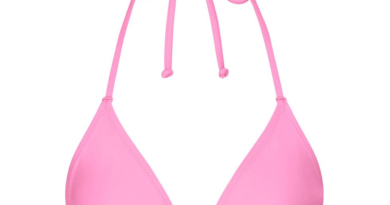Should You Be Using Tea Tree Oil for Hair
Essential oils have certainly been making their mark on the haircare industry lately. Options like castor oil and rosemary oil are being touted all over social media as hacks for growing fuller, thicker locks. Tea tree oil is another popular type used to target scalp and hair health—and is one to consider adding to your routine if it’s not already hiding in some of your go-to shampoos and scalp treatments.
To understand the ingredient’s potential benefits for hair and how best to use it, we spoke with two dermatologists, Dr. Rachel Westbay and Dr. Ife Rodney, as well as trichologist Shab Caspara about what you need to know.
What is tea tree oil?
Tea tree oil, also called melaleuca oil, is an essential oil derived from the leaves of the Melaleuca alternifolia tree that’s native to southeastern Australia. It’s been used in the country for centuries to help heal wounds and is believed to be a remedy for acne, fungal infections, dry scalp, and more thanks to its “strong antimicrobial and anti-inflammatory properties,” explains Dr. Westbay. Today, tea tree oil is widely available in its pure form and has cropped up not only in a range of skincare and makeup products but also haircare formulations.
What are the benefits of tea tree oil for your hair and scalp?
Combat dandruff and psoriasis: “Tea tree oil has anti-fungal abilities, which can thwart production of the yeast (Malassezia furfur) that’s behind dandruff,” says Dr. Westbay. And since tea tree oil is anti-inflammatory, it can help alleviate redness, itching, and pain associated with dandruff and other inflammatory skin conditions like psoriasis.
May help prevent hair loss and stimulate growth: By reducing inflammation of the scalp, a common cause of hair loss, tea tree oil may help limit hair fallout and encourage new growth. One study found that using a combination of tea tree oil, minoxidil (an FDA-approved ingredient for treating hair loss), and the anti-inflammatory drug diclofenac may be even more effective for stimulating hair growth than using minoxidil alone.
Additionally, “tea tree oil has potent antioxidant activity,” says Dr. Westbay. As such, it can ward off oxidative stress in the scalp that can damage the hair follicle and ultimately lead to hair loss.
Caspara also notes that tea tree oil is great for removing product buildup on the scalp. “This can prevent weak hair growth and ensure you have a healthy foundation for new strands to flourish in,” she says.
Clears bacteria from the scalp: Tea tree oil is antibacterial, too, so it can work to keep your scalp free of harmful bacteria responsible for painful skin infections like impetigo and folliculitis. Furthermore, the ingredient may help fight certain bacterial strains that limited research has shown may contribute to dandruff.
Regulates oil production: “Yeast is often the source of oil overproduction in scalps,” shares Dr. Westbay, adding that tea tree oil’s effectiveness in combatting yeast means it can aid in regulating excessive oiliness.
Is tea tree oil safe?
“Tea tree oil is generally safe for all hair types and textures, but it does pose some risks to those with sensitive skin, eczema, and rosacea,” says Dr. Rodney. “It can cause skin irritation, scalp irritation, or allergic reactions in some cases, so always try a patch test first.” A good way to do this, suggests Dr. Westbay, is by applying a small amount of tea tree oil to the inner arm and waiting two to three days. If no irritation occurs during this time period, it should be safe to apply to your scalp.
To note: “Tea tree is part of the same Myrtaceae plant family as clove, allspice, guava, and myrtle, so if you’re allergic to any of those, you’re likely allergic to tea tree as well and should steer clear of it,” explains Dr. Rodney.
Anyone with a rash or open sore on their scalp should similarly refrain from using tea tree oil, Caspara says, as the ingredient can further aggravate these conditions.
What’s the best way to apply tea tree oil?
Because tea tree oil’s immediate perks are for the skin, the oil is best applied directly to the scalp, ideally post-shampoo, says Dr. Rodney. Applying tree oil to the hair can also weigh it down and make it appear greasy if your mane is naturally straight or thin, she warns.
Pure tea tree oil is often highly concentrated and potent, so it’s recommended to dilute the formula with a carrier oil—such as almond, coconut oil, or jojoba oil—or by adding it your shampoo of choice. Dr. Rodney advises using no more than 5 to 10 drops of tea tree oil in your concoction, as “too much of the product can build up on the skin and worsen any scaling and flaking,” she says.
Avoid adding tea tree oil to your entire shampoo bottle in case any irritation occurs and you’ll want to stop using it. And remember, if the shampoo already contains an active ingredient to reduce dandruff, adding tea tree oil to the mix can increase your chance of sensitivity.
Alternatively, you can place a few drops of tea tree oil inside your favorite deep conditioning hair mask to get both flake-fighting and hydration-boosting benefits, suggests Dr. Westbay. “Fortunately, there are no known ingredients that interfere with tea tree oil, allowing you to be quite flexible with it,” she says.
If playing mix master feels like a lot of effort to you, though, consider seeking products already formulated with tea tree oil.
How often should you use tea tree oil in hair?
When applied with a carrier oil as a leave-in treatment, our experts agree tea tree oil should be used on the scalp no more than three times per week. Shampoos and conditioners with tea tree oil can be used daily or following your regular washing schedule. And with any serum or scalp oil you purchase, make sure to read up on the product’s specific instructions for guidance on how frequently to use it.
Speaking of, scroll on to shop some of the best tea tree oil products recommended by our experts and thousands of customers.




